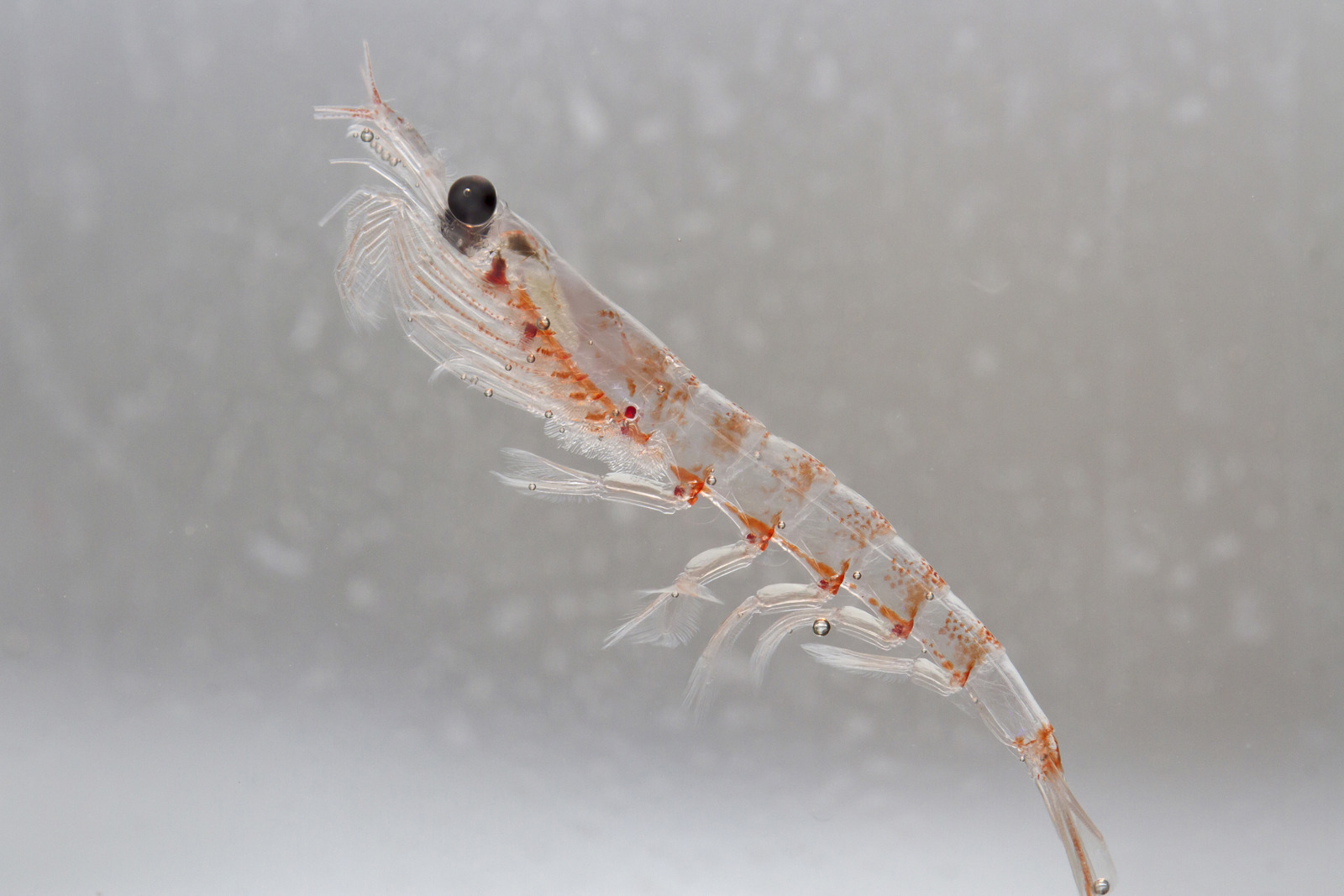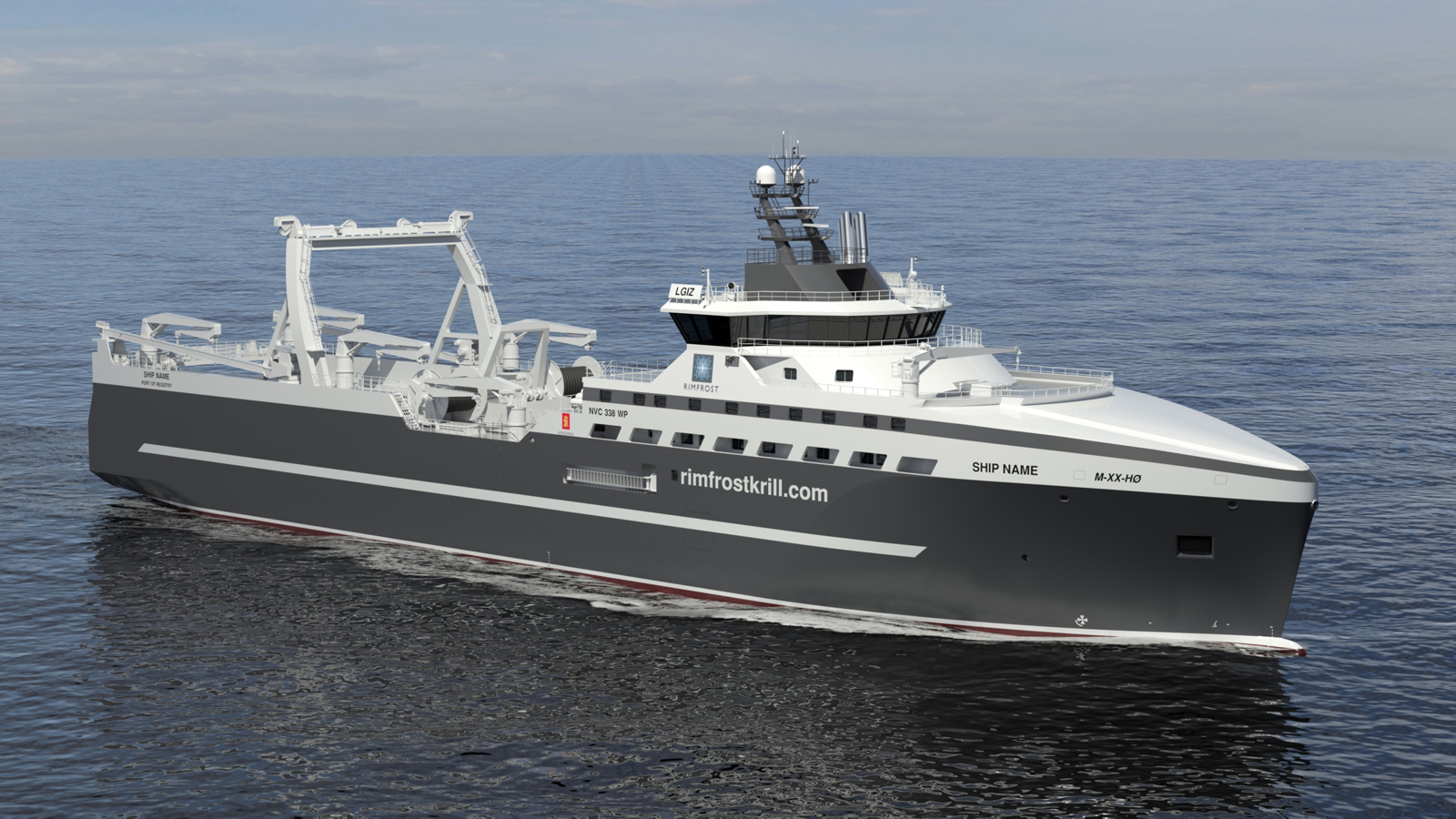
This is the story of how Rimfrost’s new krill trawler will help to protect the Antarctic, one of our planet’s most vulnerable ecosystems, while harvesting its resources sustainably and responsibly.
-
Text:Marketing & Communication Department
Photo:@ Rimfrost AS @ Shutterstock
-
Gunvor Hatling MidtbøVice President, Communications
The Antarctic is one of our planet’s most vulnerable ecosystems. When Rimfrost asked Kongsberg Maritime to create a new vessel, it wasn’t anything out of the ordinary. The company had been a client for many years.
The type of vessel – a krill fishing trawler – wasn’t in itself unusual. KONGSBERG had delivered design and engineering work for the client’s first krill trawler, and design work for a later overhaul. The company had also developed several krill fishing vessel concepts for others around the world.
This vessel, however, would be unlike anything built before.
“This vessel will revolutionise krill fishing in Antarctica,” says Rimfrost CEO Stig Remøy. “It will be the only one in the world where the health and food supplements are actually produced at sea, immediately after the catch.
“Short and careful processing will make more efficient use of the catch, thereby reducing the quantity required, as well as having a positive effect upon product quality. This vessel will set a completely new standard for krill fishing in Antarctica in terms of climate-friendliness, sustainability and optimal resource use.”

Design for a difficult environment
“We had to think about the logistics of the entire operation — safely putting the fishing gear into the water, trawling and pumping krill onboard as gently as possible, controlling the internal flow of krill from sea to process to cargo hold,” says Einar Vegsund, Kongsberg Maritime’s Director of Ship Design Solutions.
KONGSBERG also had to consider how to reduce the time spent deploying and retrieving the trawl gear, with minimum manual crew handling, as well as ways to offload the cargo and receive fuel and other supplies from other vessels while still at sea. Rimfrost needed solutions robust enough for operations in remote areas with limited availability of repair and spares.
On top of those practical considerations, the vessel had to operate sustainably and reduce environmental impact.
A government licence is required to fish krill in Antarctica. To gain one, vessel owners must provide a strong application, which includes a plan for sustainable fishing. Rimfrost was very clear about that from day one and had to demonstrate their commitment to delivering sustainably, or they would not be able to operate at all.
Fortunately, KONGSBERG is well-equipped to face such challenges. “As a technology provider, we see opportunities and alternative uses of technology across divisions, segments and markets,” says Robert Vorren, Chief Designer, Fishery.
“We always have resources assigned to research and development, and we’re always looking at the future, aiming to improve things like emission levels, energy efficiency, safety and performance. So we rose eagerly to the challenge of coming up with new ideas for Rimfrost.”
A government licence is required to fish krill in Antarctica.
Winterisation and polar operational challenges have been solved for other solutions KONGSBERG has designed in the last few years. For example, as well as fishing vessels designed for operations in Arctic regions, there are solutions for icebreaking polar research vessel RV Kronprins Haakon, British polar research ship RRS Sir David Attenborough and polar cruise ship MS Fridtjof Nansen.
All of those were designed for operations in Antarctic areas in collaboration with owners. That experience helped inform the development of the Rimfrost project. The result is a design that not only meets the requirements of the client, it also meets – and exceeds – the requirements of the Polar Code set by the International Maritime Organisation.
The new vessel contains features like heat recovery and diesel electric propulsion to ensure energy-efficient operation. The azimuth propulsor in the bow allows easy manoeuvring. There are safety and systems redundancies in place, which is absolutely vital – there’s no way to get assistance quickly when in the Antarctic.
We may have used existing technologies, but we’ve done so in new ways. Essentially, this vessel represents an entirely new way of deploying, retrieving and processing a krill trawl. It’s like nothing we’ve ever done before.